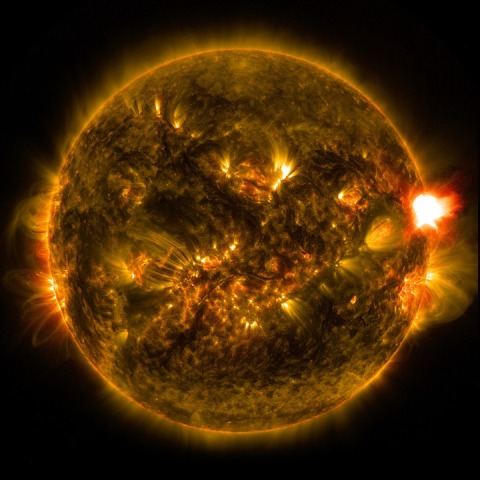Massive solar flare inadvertently detonated hidden bombs during Vietnam War: Research
"This is one of only a handful of events in the space age that would have posed an immediate threat to astronaut safety, had humans been in transit to the moon at the time," researchers said.

A massive solar storm accidentally set off at least two dozen underwater mines during the Vietnam War, prompting the US Navy to look for alternatives that were more resistant to the effects of the Sun, scientists say.
Researchers from the University of Colorado Boulder in the US and University of Newcastle in Australia looked at US Navy records from 1972 to understand the severity of the solar storm.
"Between 2 and 4 August 1972 (a sunspot) produced a series of brilliant flares, energetic particle enhancements and Earth-directed ejecta," researchers wrote in the study published in the journal Space Weather.
Those flares cleared the path for a subsequent ultra-fast shock that reached Earth in record time of 14.6 hours, 'Live Science' reported.
People all over the planet noticed that flare's effects. There were radio blackouts and X-ray emissions from the long-duration flare remained high for over 16 hours.
For the first time, a space-based detector observed gamma-rays during this solar flare, researchers said.
The flare also caused damage to solar panels on satellites in space. A defence communications satellite "suffered a mission-ending on-orbit power failure."
"This is one of only a handful of events in the space age that would have posed an immediate threat to astronaut safety, had humans been in transit to the moon at the time," researchers said.
However, the space weather researchers of the time had largely ignored another consequence of the storm -- the sudden detonation of US Navy sea mines that had been dropped into the coastal waters of North Vietnam three months earlier.
Pilots flying over the area spotted about two dozen explosions in a minefield in just a 30-second period, researchers said.
Naval researchers of the time ultimately concluded that the magnetic sensors in the mines, primed to detect passing metal ships, had been triggered by the solar storm.
This event led to major changes within the US Navy, which rapidly researched alternatives to the magnetic sensor mines that would be more resistant to solar effects, researchers said.
However, the story never really made its way over to the space weather research community.
(With inputs from agencies.)










